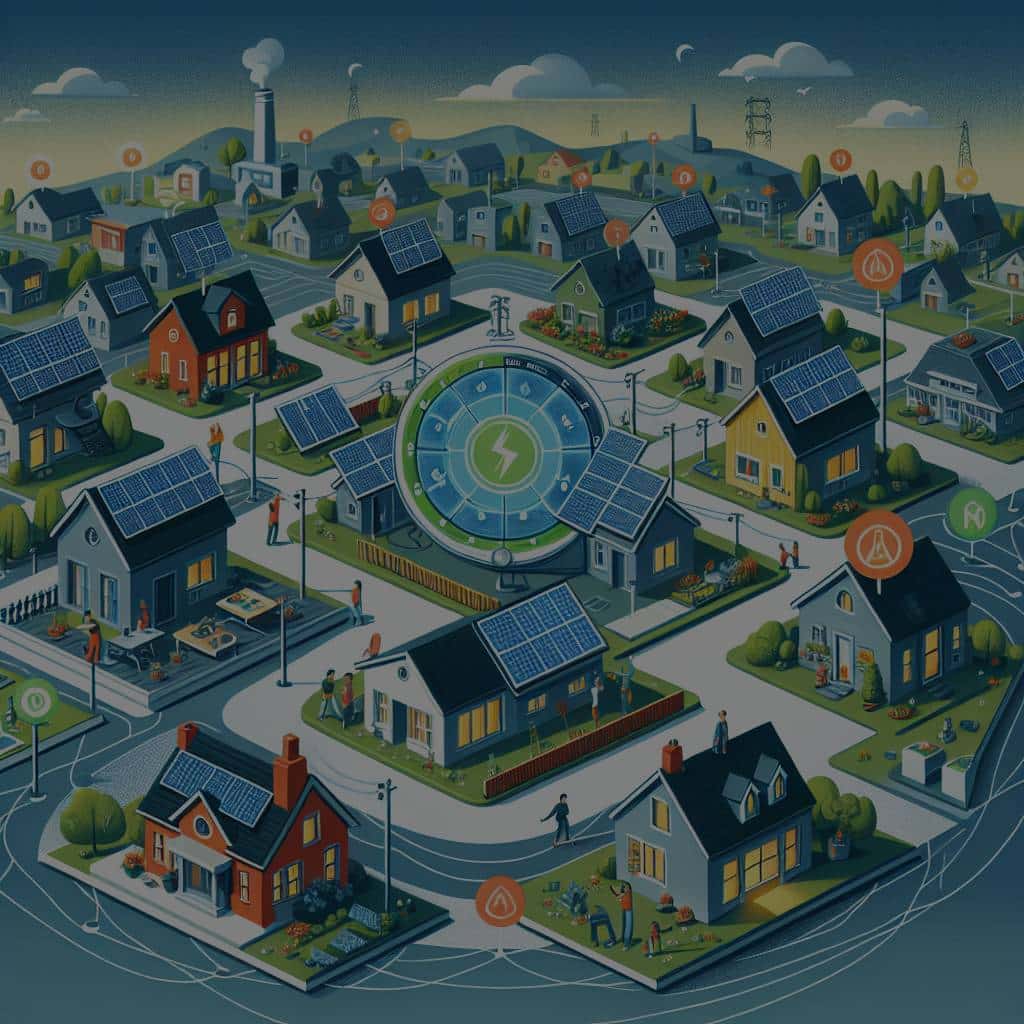How Could Virtual Power Plants Revolutionize Residential Energy Management?

The world of power and energy is undergoing a significant transformation. With the rise of renewable resources like solar and wind, the traditional energy landscape is steadily shifting towards more sustainable, eco-friendly alternatives. A key player in this transition is the concept of Virtual Power Plants (VPPs).
VPPs are an exciting approach to managing and distributing electricity, leveraging solar power, battery storage, and advanced data management systems. This emerging technology could revolutionize how you manage energy in your home, enabling you to contribute to a greener future while potentially saving money. Let’s delve into how VPPs work and their potential impact on residential energy management.
Lire également : What Role Does 3D Holography Play in Enhancing Telemedicine Consultations?
What are Virtual Power Plants?
Virtual Power Plants are a decentralized, distributed network of energy resources harnessed to supply a power grid. VPPs are not physically located in one place like conventional power plants. Instead, they consist of several distributed energy resources, like solar panels and battery storage systems, interconnected via a sophisticated data management system.
This system enables real-time communication between all resources, managing their supply to match the demand on the grid. Through this virtual network, power is harvested from many smaller sources, rather than a single large plant. The result is a highly flexible and resilient energy system that can adapt quickly to shifts in demand and supply.
A voir aussi : Can Synthetic Data Overcome Privacy Concerns in AI Facial Recognition Training?
The Role of Renewable Energy and Battery Storage in VPPs
A fundamental component of VPPs is the use of renewable energy sources. Solar power plays a significant role due to its increasingly widespread adoption and suitability for residential use. By outfitting your home with solar panels, you become a part of the VPP ecosystem.
When solar panels generate more power than you need, the excess energy is stored in battery storage systems. These batteries act as a reservoir of power that can be deployed when demand on the grid exceeds supply, such as during peak usage times.
Battery technology is rapidly advancing, with newer models offering longer life spans and greater storage capacity. This progress makes them an integral part of the VPP infrastructure. By managing these distributed storage units effectively, VPPs can ensure a steady supply of power, even when renewable sources are intermittent.
The Power of Data in Virtual Power Plants
One of the key strengths of VPPs lies in their use of data. Real-time data is essential for managing the complex network of resources that make up a VPP. It allows the system to balance the power supply with demand effectively.
Advanced algorithms and machine learning techniques analyze this data in real time, predicting patterns in electricity usage and adjusting the distribution of power accordingly. This proactive management helps to prevent power shortages and reduce reliance on non-renewable power sources during times of high demand.
Data management in VPPs also enables effective communication between all units in the network, ensuring that power is distributed efficiently and sustainably. Without this proficiency in data handling, the coordination and control of such a widely distributed system would be impossible.
How VPPs Benefit Residential Energy Management
VPPs could revolutionize residential energy management by allowing you to gain control over your energy usage. With a solar panel and battery storage system installed, your home becomes an active part of the local power grid.
Firstly, you can reduce your carbon footprint by generating your own electricity from renewable sources. Secondly, the excess power you produce can be stored in your battery system, ready to be deployed when needed.
This ability to store and manage power can also bring financial benefits. Many power companies offer schemes that pay consumers for supplying excess power back to the grid. With a VPP set up, you could potentially earn money from the energy you produce.
Additionally, VPPs can lead to more resilient local power grids. By decentralizing power generation, the risk of large-scale power outages is reduced. If one home or neighborhood experiences a power cut, the impact on the wider grid is minimized due to the distributed nature of VPPs.
The Future of Virtual Power Plants
The future of VPPs is promising. As technology continues to develop, we can expect to see more advanced data management systems, better battery storage solutions, and more efficient solar panels.
Furthermore, with the ongoing climate crisis, the push for renewable energy is stronger than ever. VPPs represent a sustainable, flexible solution to our energy needs, offering a way to reduce our reliance on fossil fuels while improving the reliability of our power grids.
For homeowners, the adoption of VPPs could mean a future where they have more control over their energy use, with the potential for financial benefits and the knowledge that they’re contributing to a cleaner, more sustainable planet. The revolution in residential energy management is just beginning, and Virtual Power Plants are at the forefront.
Integrating VPPs with Smart Homes and Electric Vehicles
The integration of Virtual Power Plants (VPPs) with smart home technology and electric vehicles (EVs) is a promising development in the residential energy management landscape. This integration aims to optimize energy use, enhance grid stability and promote clean energy generation.
In a smart home, various devices such as lighting, HVAC systems, home appliances and even EVs can be managed remotely through an automated system. These devices, when connected to the VPP network, can interact in real time with the power grid. They can adjust their operations based on the current power supply and demand conditions, thereby reducing energy consumption and improving energy efficiency.
For instance, during periods of high power generation, excess energy can be used to charge your EV or power your home appliances. Conversely, during peak demand periods, your home could potentially draw power from the energy stored in your EV or home battery storage system.
Furthermore, the VPP system’s advanced data management capabilities can analyze usage patterns and automatically schedule certain energy-intensive tasks to off-peak hours. This not only minimizes your energy bills but also helps in managing the demand response of the grid, thereby promoting grid stability.
Along with energy optimization, the integration of VPPs, smart homes and EVs also promotes the adoption of renewable energy sources. Solar panels installed on your home can generate clean energy, which can be stored in your home’s battery storage or your EV’s battery, reducing reliance on fossil fuels.
Conclusion
The shift towards renewable energy is becoming increasingly crucial in the wake of the ongoing climate crisis. Virtual Power Plants (VPPs) represent a groundbreaking advancement in residential energy management, harnessing the power of solar energy, battery storage systems, and data management to create a more sustainable, reliable and resilient power grid.
By decentralizing power generation and storage, VPPs reduce the risk of large-scale power outages, improve grid stability and promote the efficient use of energy. Not only can homeowners potentially earn money by supplying excess power back to the grid, but they can also reduce their carbon footprint, making a tangible contribution to the fight against climate change.
The integration of VPPs with smart home technology and electric vehicles can further optimize energy use, automating energy-intensive tasks to off-peak hours and using renewable energy sources more efficiently.
As technology advances, we can anticipate better data management systems, more efficient storage systems, and more widespread adoption of solar panels, making VPPs even more effective. The revolution in residential energy management has indeed begun, and Virtual Power Plants are leading the charge towards a cleaner, more sustainable future.
